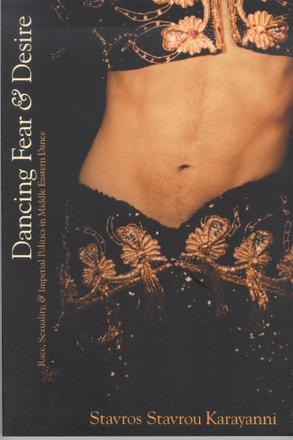
Dancing Fear and Desire
Race, Sexuality, and Imperial Politics in Middle Eastern Dance
Description
Throughout centuries of European colonial domination, the bodies of Middle Eastern dancers, male and female, move sumptuously and seductively across the pages of Western travel journals, evoking desire and derision, admiration and disdain, allure and revulsion. This profound ambivalence forms the axis of an investigation into Middle Eastern dance—an investigation that extends to contemporary belly dance.
Stavros Stavrou Karayanni, through historical investigation, theoretical analysis, and personal reflection, explores how Middle Eastern dance actively engages race, sex, and national identity. Close readings of colonial travel narratives, an examination of Oscar Wilde’s Salome, and analyses of treatises about Greek dance, reveal the intricate ways in which this controversial dance has been shaped by Eurocentric models that define and control identity performance.
Awards
- Winner, European Society for the Study of English (ESSE) Book Award for Cultural Studies 2006
Reviews
Dancing Fear and Desire bridges `the discourse of postcolonial dance and queer theory.' Through its examination of `the politics of dance--tsifteleli, belly dance [and] Oriental dance'--the book will appeal to serious students of the dance as cultural phenomenon.... An interesting mix of personal observations, subjective conclusions, and scholarly research, Karayanni's study advances our understanding of and appreciation for Middle Eastern dance forms.
- M. Wayne Cunningham, Canadian Book Review Annual, 2006, 2007 February